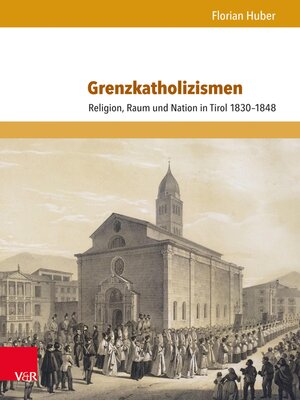Grenzkatholizismen
ebook ∣ Religion, Raum und Nation in Tirol 1830–1848 · Schriften zur politischen Kommunikation
By Florian Huber

Sign up to save your library
With an OverDrive account, you can save your favorite libraries for at-a-glance information about availability. Find out more about OverDrive accounts.
Find this title in Libby, the library reading app by OverDrive.



Search for a digital library with this title
Title found at these libraries:
| Library Name | Distance |
|---|---|
| Loading... |
Im Vormärz veränderten zentralstaatliche Durchdringung, mediale Innovation, wirtschaftlicher Wandel, neue politische Ideen und »religious revivals« die Gesellschaften Europas grundlegend. Grenzräume wie das Kronland Tirol im Westen der Habsburgermonarchie waren dem in besonderem Maße ausgesetzt. Hier prallten »deutsche« und »italienische« katholische Kulturen aufeinander. Deutschsprachige Ultramontane im Norden und liberale Katholiken im italienischen Süden Tirols stellten sich anders zum modernen Staat und verfolgten unterschiedliche Gesellschaftsentwürfe. Für beide aber war Religion das zentrale Bindeglied zur übergeordneten Kulturnation. Die Studie verbindet Ansätze der borderland studies mit religions- und medienhistorischen Fragestellungen und zeigt, wie sehr katholizismusgeschichtliche Untersuchungen von transnationalen Perspektiven profitieren können. The Vormärz can be read as a phase of profound change: enforcement of the central government, media innovation, economic change, new political ideas and religious revivals fundamentally changed Europe's society. Border regions were particularly affected, as was Tyrol, a crownland in the western part of the Habsburg Monarchy, where the "German" and "Italian" catholic cultures clashed as a result of their starkly different reactions to the "impositions of modernity" (R. Schlögl). German-speaking Ultramontanes in northern Tyrol and liberal Catholics in the Italian-speaking south had diverging relationships with the modern state and pursued different models of society. For both branches of Catholicism religion was the central link to their respective nationalities. The study combines the core approaches of borderland studies with religious and media history and shows how historical studies of Catholicism can benefit from transnational perspectives.







